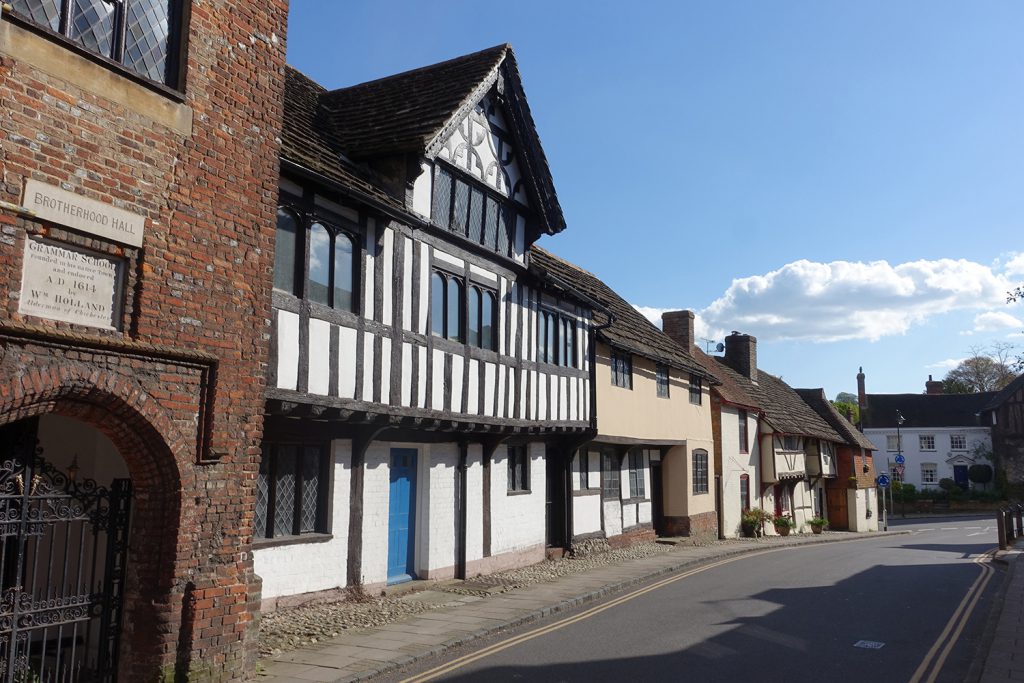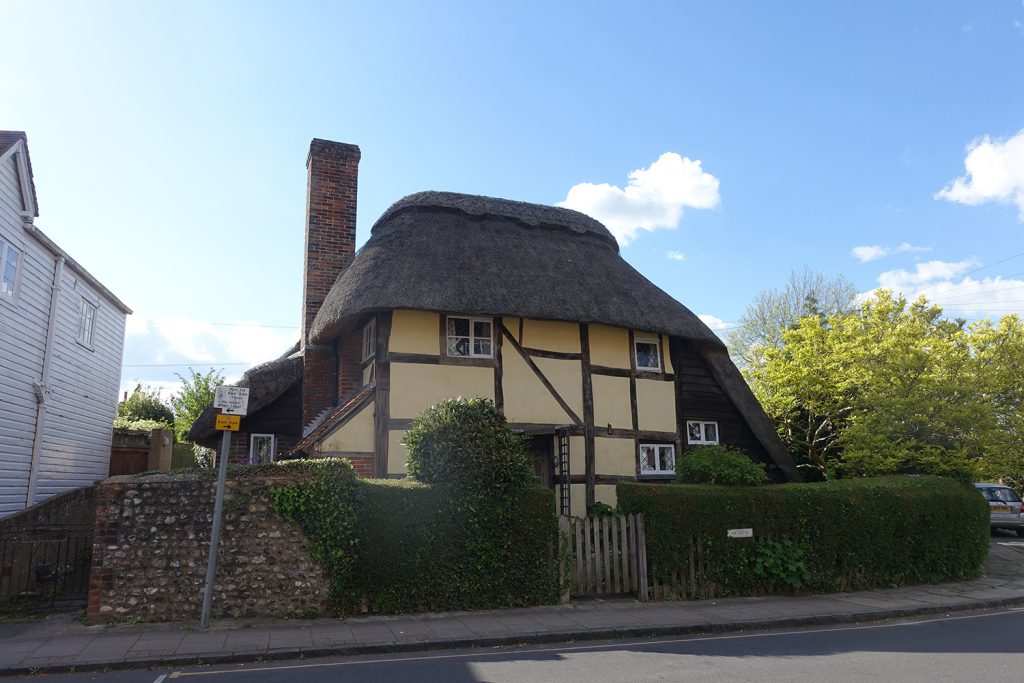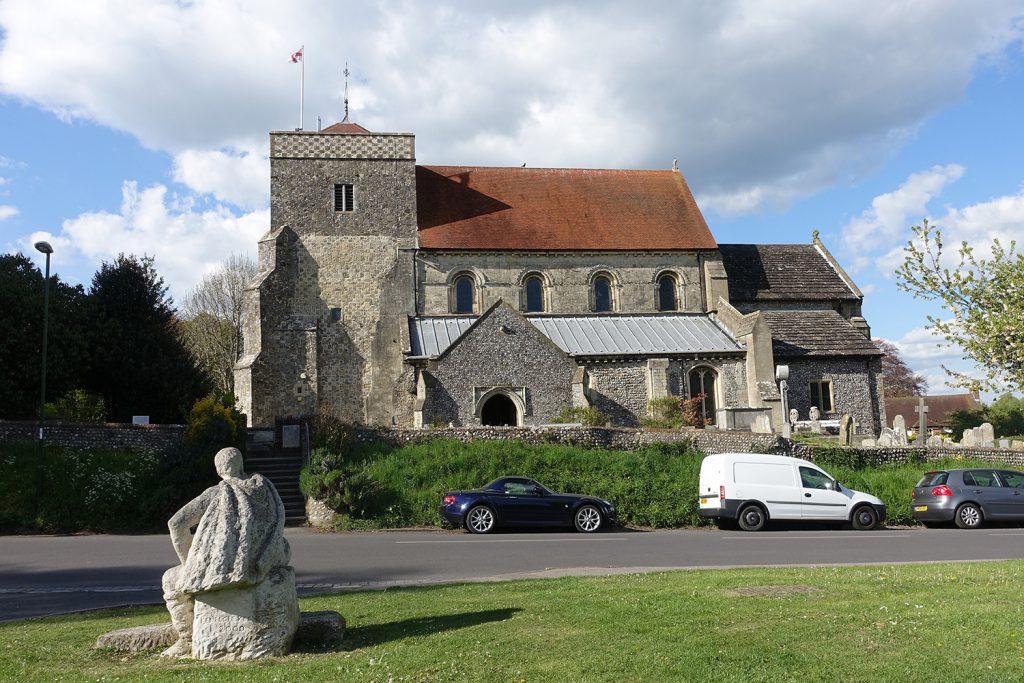
Sussex, her towns, ports and villages, were at the heart of the Saxon Kingdom of Wessex.
In my imagination I can picture wooden Saxon houses flanking the old Roman streets of Chichester, the earlier pavements covered by grass. By the late 6th and early 7th centuries Steyning, Lewes, Hastings and Pevensey had developed from their farming origins into towns of craftsmen and traders. By the 10th century all these towns had mints producing coinage which is evidence of an established urban economy. A mint was recorded at Steyning at the end of King Canute’s (1016-1035) reign, and was perhaps the successor to the mints of Burpham and Cissbury.

The penny illustrated dates from the reign of Edward the Confessor (1042 – 1066) and is an example of Saxon coins from the Steyning mint. Coins are remarkable in their ability to provide a tangible connection with our past. Edward the Confessor, also known as Saint Edward the Confessor, was amongst the last Anglo-Saxon kings of England, and was the last king of the House of Wessex.

Many antiquarians argue that where buildings of a varied type, arranged in close proximity to one another along the main street of a town or village are found they are often following a tradition dating back to Saxon times. This would certainly appear to be the case at Steyning. Saxon Cottage in Church Street actually dates from c.1550 but its name perhaps hints at an earlier structure on the site now lost. The town was located on the River Adur and is generally believed by historians to have been one of the most important ports in Saxon times.

The current parish church of St Andrew and St Cuthman has Saxon origins and replaced a timber structure built by St Cuthman. Inside, in the south aisle, alongside the fine Norman arcading, is an arch exquisitely carved with fabulous beasts. Contemporary historians are increasingly of the view that this arch dates from the late Saxon renaissance which took place during the reign of King Canute. The Saxon St Cuthman and Aethelwulf (839-858 are both said to have been buried there). Aethelwulf was father of King Alfred.
Today Steyning with her fine church, architecture and Museum connects us with our past. The Sussex Produce Company and the wonderful Steyning Bookshop along with a rich array of other independent retailers, restaurants and tea rooms maintain the vibrant tradition of this ancient and important town. The perfect place to visit as spring returns to Sussex!
By Rupert Toovey, a senior director of Toovey’s, the leading fine art auction house in West Sussex, based on the A24 at Washington. Originally published in the West Sussex Gazette.